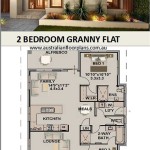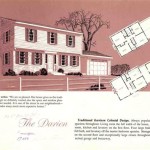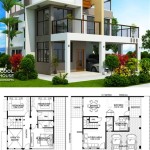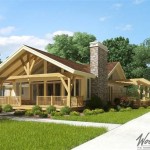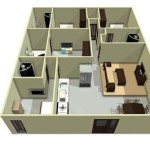Minimal House Plans: Embracing Simplicity and Functionality
Minimal house plans represent a growing trend in residential architecture, emphasizing simplicity, functionality, and efficient use of space. These designs prioritize clean lines, open layouts, and a reduction of unnecessary elements, resulting in homes that are both aesthetically pleasing and practical.
The core principle of minimal house plans revolves around decluttering and maximizing the utility of available space. This often translates to smaller square footage compared to traditional homes but with a focus on creating a sense of spaciousness through open floor plans and strategic placement of windows and natural light sources. Unnecessary walls and partitions are minimized, favoring a free-flowing transition between living areas.
Minimalist design doesn't necessarily mean stark or barren. Rather, it emphasizes careful curation of essential furnishings and décor. The focus shifts from accumulating possessions to investing in high-quality, multi-functional items that serve a purpose and contribute to the overall aesthetic. Built-in storage solutions are often incorporated to maintain a clutter-free environment.
Several key features characterize minimal house plans. Open floor plans are a hallmark, seamlessly connecting the kitchen, dining, and living areas. This creates a sense of community and encourages interaction, while also maximizing natural light penetration throughout the space. Large windows and sliding glass doors further enhance this effect, blurring the lines between indoor and outdoor living.
A neutral color palette is typically employed in minimal house designs, creating a calming and cohesive atmosphere. Whites, grays, and beige tones are common choices for walls and flooring, providing a backdrop that allows furniture and artwork to stand out. Pops of color can be introduced through carefully selected accessories or accent pieces.
Sustainable materials and practices often play a significant role in minimal house plans. This can include the use of recycled or reclaimed materials, energy-efficient appliances and lighting, and passive solar design principles to minimize environmental impact and reduce energy consumption. Green roofs and rainwater harvesting systems are also increasingly incorporated into these designs.
Minimal house plans offer a variety of benefits. The reduced square footage translates to lower construction costs and reduced maintenance requirements. Energy efficiency is often improved due to the smaller footprint and incorporation of sustainable design elements. The simplified living environment can also promote a sense of calm and well-being, reducing stress and clutter-related anxieties.
Different types of minimal house plans cater to various lifestyles and needs. Tiny houses represent the extreme end of the spectrum, offering compact and highly efficient living spaces. Small modular homes provide prefabricated units that can be easily assembled and customized. Single-story minimal houses prioritize accessibility and ease of maintenance, while multi-story designs maximize space utilization on smaller lots.
When considering a minimal house plan, careful planning is essential. Prioritizing needs and lifestyle requirements is crucial to ensure the design effectively accommodates daily activities. Working with an experienced architect or designer can help optimize the use of space and ensure the home meets specific functional and aesthetic goals.
Choosing the right furniture and décor is essential to complement the minimalist aesthetic. Investing in high-quality, multi-functional pieces that align with the overall design scheme is key. Avoiding clutter and maintaining a sense of openness contributes to the desired minimalist atmosphere.
Landscaping plays a vital role in enhancing the overall aesthetic of a minimal house. Simple, low-maintenance landscaping designs that complement the clean lines of the architecture are preferred. Native plants and drought-tolerant landscaping can further enhance sustainability and reduce water usage.
Minimal house plans offer a compelling alternative to traditional home designs. By embracing simplicity, functionality, and efficient use of space, these plans provide a pathway to a more sustainable and fulfilling lifestyle. The focus on essential elements and the elimination of excess allows for a greater appreciation of the space and the objects within it, creating a truly unique and personalized living environment.
The increasing popularity of minimal house plans reflects a growing awareness of the benefits of mindful living and a desire for homes that prioritize functionality and well-being. These designs cater to a diverse range of individuals and families seeking a simpler, more sustainable, and ultimately more fulfilling way of life.

Minimalist Floor Plans With Porches Houseplans Blog Com

Contemporary Home Ch113 Minimalist House Design Floor Plans Small

5 Bedroom Modern Minimalist House Plan Plans

The Minimalist Small Modern House Plan 61custom Contemporary Plans

5 Bedroom Modern Minimalist House Plan Plans

Three Bedroom Minimalist House Plan Pinoy Plans

Minimalist House 85 Design Archdaily

Minimalist Floor Plans With Porches Houseplans Blog Com

𝐀𝐌𝐀𝐙𝐎𝐍 𝐃𝐄𝐒𝐈𝐆𝐍𝐄𝐑𝐒 On Instagram Revit Lumion Credit Growarq Designers Casas Construção De Projetos Modernas

Minimalist Modern Bungalow For Beginners Pinoy House Plans

